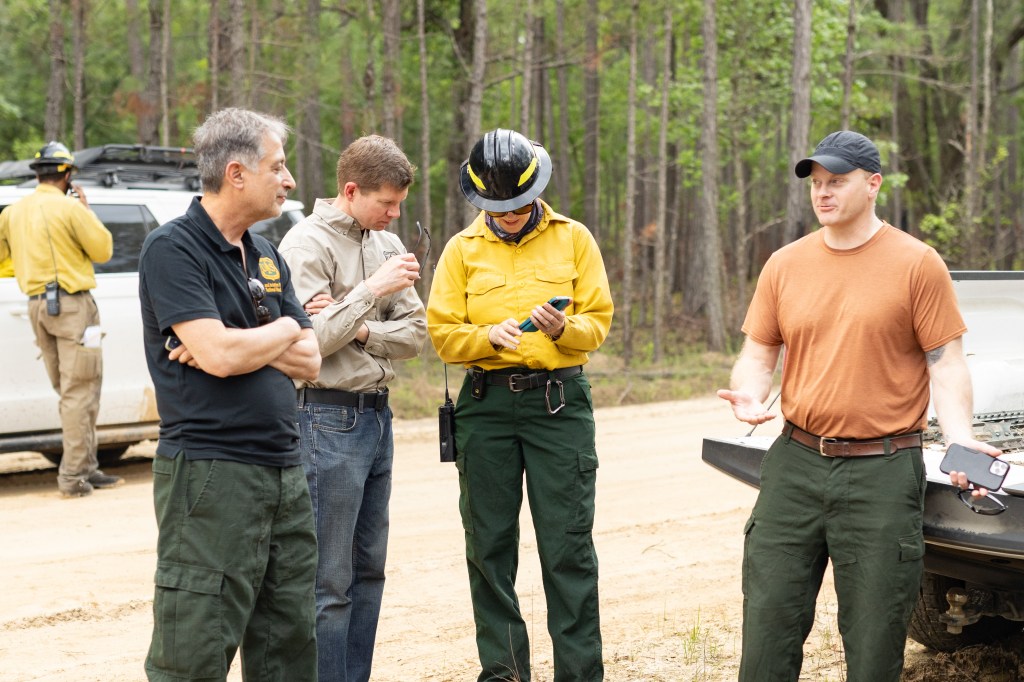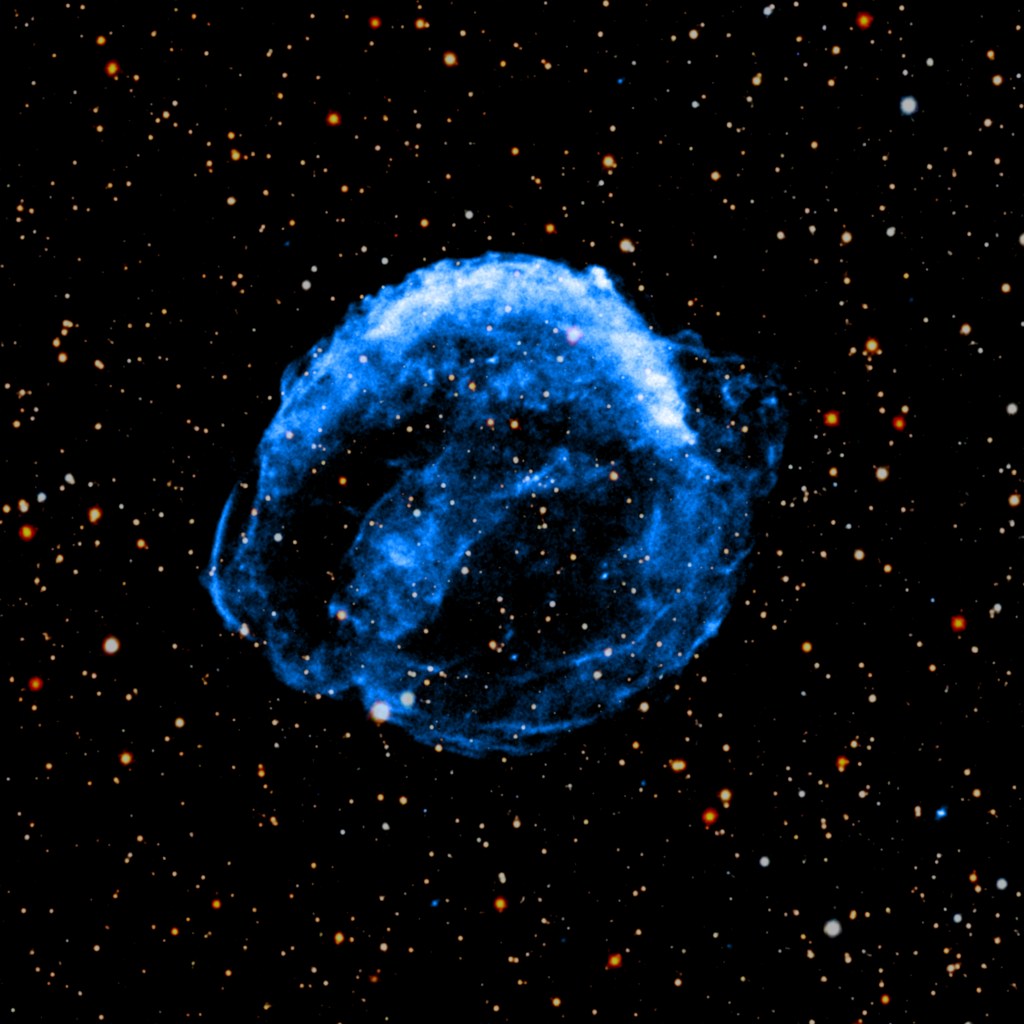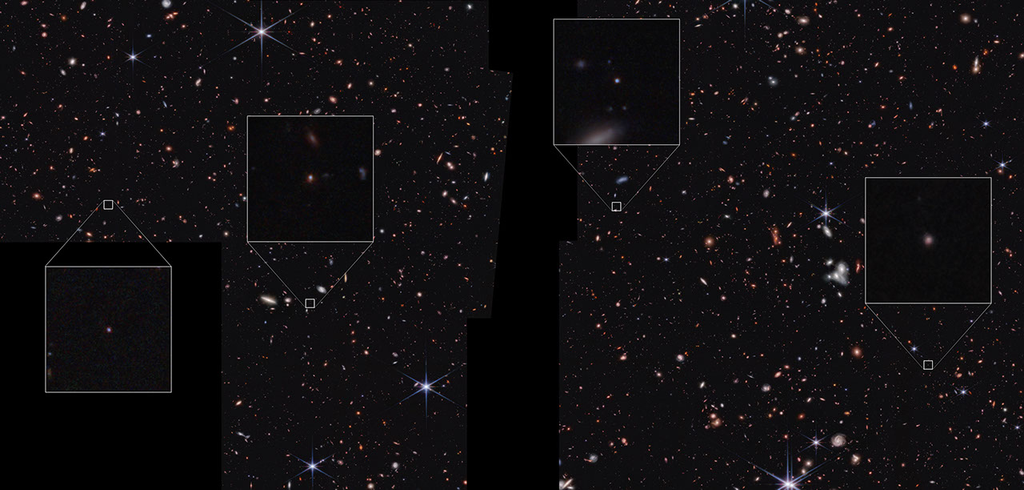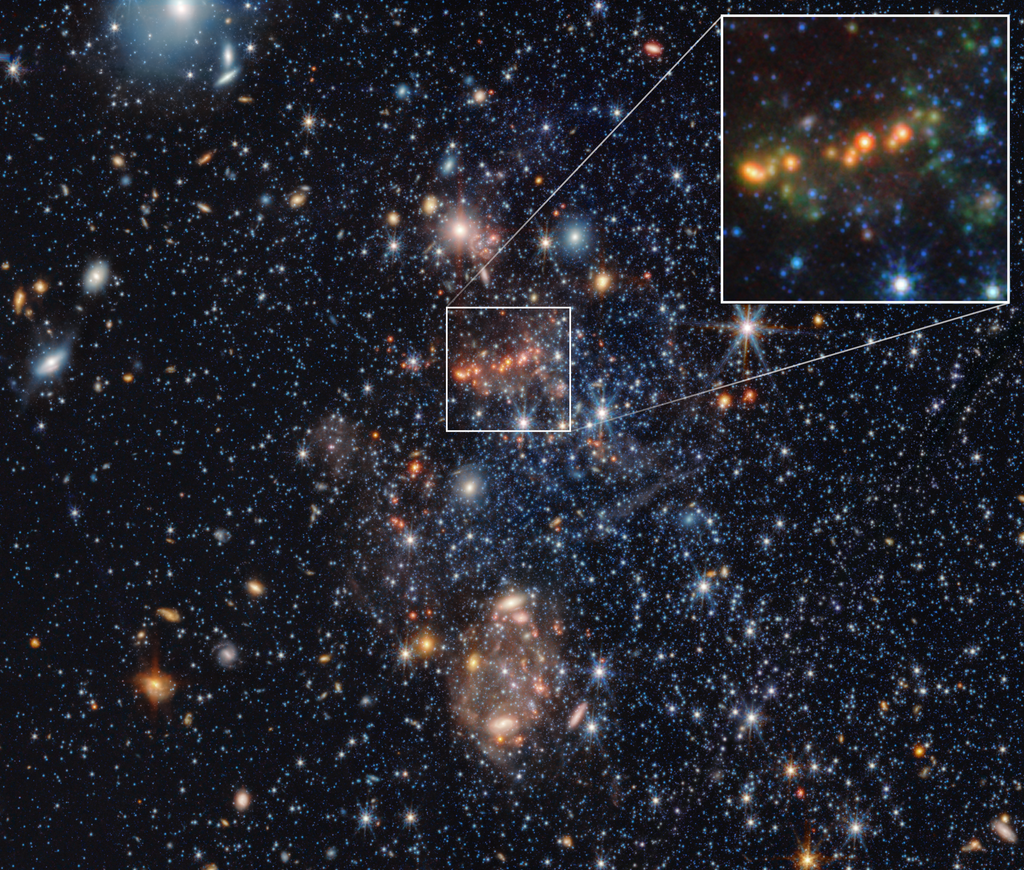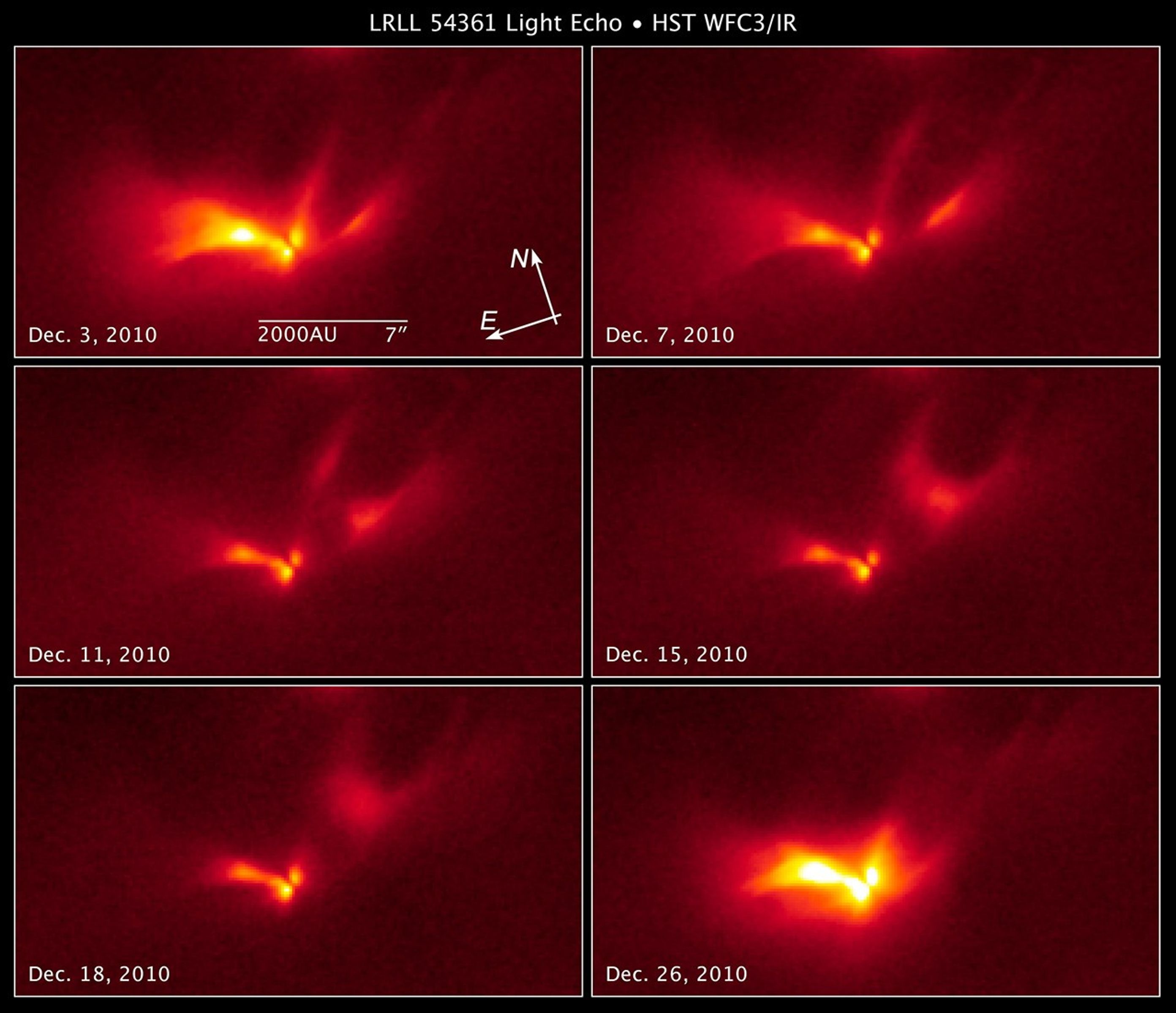1 min read
LRLL 54361 Light Echo – Hubble – Dec. 7, 2010

About the Object
- R.A. PositionR.A. PositionRight ascension – analogous to longitude – is one component of an object's position.03h 43m 50.99s
- Dec. PositionDec. PositionDeclination – analogous to latitude – is one component of an object's position.32° 2' 48.0"
- ConstellationConstellationOne of 88 recognized regions of the celestial sphere in which the object appears.Perseus
- DistanceDistanceThe physical distance from Earth to the astronomical object. Distances within our solar system are usually measured in Astronomical Units (AU). Distances between stars are usually measured in light-years. Interstellar distances can also be measured in parsecs.950 light-years (290 parsecs)
About the Data
- Data DescriptionData DescriptionProposal: A description of the observations, their scientific justification, and the links to the data available in the science archive.
Science Team: The astronomers who planned the observations and analyzed the data. "PI" refers to the Principal Investigator.The image was created from Hubble data from proposal 12284: J. Muzerolle (PI; STScI) and collaborators. The science team comprises: J. Muzerolle (STScI), E. Furlan (NOAO and Caltech), K. Flaherty (Steward Obervatory), Z. Balog (Max Planck Institute for Astronomy, Heidelberg), and R. Gutermuth (University of Massachusetts, Amherst). - InstrumentInstrumentThe science instrument used to produce the data.HST>WFC3/IR
- Exposure DatesExposure DatesThe date(s) that the telescope made its observations and the total exposure time.Dec. 7, 2010
- FiltersFiltersThe camera filters that were used in the science observations.F160W (H)
- Object NameObject NameA name or catalog number that astronomers use to identify an astronomical object.LRLL 54361, L54361
- Object DescriptionObject DescriptionThe type of astronomical object.Protostar
- Release DateFebruary 7, 2013
- Science ReleaseStrobe-Like Flashes Discovered in a Suspected Binary Protostar
- Credit

The Hubble images were originally black and white and recorded only overall brightness. These brightness values were translated into a range of reddish hues. Such color "maps" can be useful in helping to distinguish subtly varying brightness in an image.

Related Images & Videos

Protostar LRLL 54361
NASA's Spitzer and Hubble space telescopes have teamed up to uncover a mysterious infant star that behaves like a police strobe light. [Left] – This is a false-color, infrared-light Spitzer image of LRLL 54361 inside the star-forming region IC 348 located 950 light-years away....

Artist's Impression of Pulsating Object LRLL 54361
This is an artist's impression of two young binary stars that may be the source of mysterious clock-like bursts of light from an object called LRLL 54361 that lies inside the star-forming region IC 348, located 950 light-years away. Astronomers propose that the flashes are due...

LRLL 54361 Light Echo – Hubble
This sequence of images from the Hubble Space Telescope shows a pulse of light emanating from the protostellar object LRLL 54361. Most if not all of this light results from scattering off circumstellar dust in the protostellar envelope. An apparent edge-on disk visible at the...

Strobe-Like Flashes Discovered in a Suspected Binary Protostar
This video, created from a sequence of images from the Hubble Space Telescope, shows a pulse of light emanating from the protostellar object LRLL 54361. Most if not all of this light results from scattering off circumstellar dust in the protostellar envelope. An apparent edge-on...

Strobe-Like Flashes Discovered in a Suspected Binary Protostar (Annotated)
This video, created from a sequence of images from the Hubble Space Telescope, shows a pulse of light emanating from the protostellar object LRLL 54361. Most if not all of this light results from scattering off circumstellar dust in the protostellar envelope. An apparent edge-on...
Share
Details
Claire Andreoli
NASA’s Goddard Space Flight Center
Greenbelt, Maryland
claire.andreoli@nasa.gov








